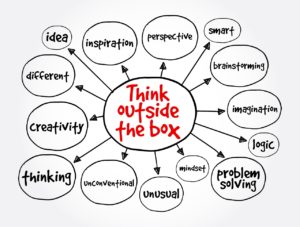Perspective-taking is not only a social skill, but also a cognitive skill. It enables you to broaden your horizons, challenge your assumptions, and discover new possibilities. Perspective-taking can also help you to overcome biases, stereotypes, and prejudices that may limit your creativity and innovation, and help you think outside the box .

Power of Perspective enabling creativity and Innovation.
In this course, you will learn how perspective-taking can benefit you at each stage of the innovation process:
- Define your problem or challenge. You will learn how to identify the needs and preferences of your customers, users, and beneficiaries by taking their perspectives. You will also learn how to frame your problem or challenge in a way that invites multiple perspectives and solutions.
- Generate ideas from different perspectives. You will learn how to use your imagination and curiosity to come up with new and original ideas that address the problem or challenge from different angles – e.g. temporal, geographic or other perspectives.. You will also learn how to use brainstorming techniques that leverage perspective-taking. There are many tools such as SCAMPER (Substitute, Combine, Adapt, Modify, Put to another use, Eliminate, Reverse) or TRIZ (Theory of Inventive Problem Solving) that can assist in expanding your power of perspective.
- Evaluate and refine your ideas. You will learn how to compare and contrast your ideas with the existing solutions and the stakeholders’ needs and preferences by taking their perspectives. You will also learn how to improve your ideas based on feedback from others.
- Communicate and implement your ideas. You will learn how to choose the best idea or combination of ideas that meet your criteria for creativity and innovation. You will also learn how to explain how your idea solves the problem or challenge from different perspectives. You will also learn how to demonstrate how your idea adds value and impact.
By taking this course, you will not only improve your creativity and innovation skills, but also your collaboration, communication, and leadership skills. You will be able to work with diverse teams and leverage their skills, knowledge, and insights. You will also be able to inspire others and make a difference by taking their perspectives.
If you are interested in taking this Power of Perspective course, please visit our website for more information and registration details. Don’t miss this opportunity to unlock the power of perspective for yourself and your organization.

